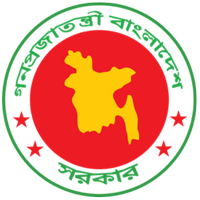Lifting up the Unvaccinated: Understanding the Zero-Dose and Under-Immunised Communities

Vaccination is a fundamental human right for every child on Earth. The global health sector is immensely dedicated to reaching every single child and ensuring complete vaccination in the current decade. Immunisation coverage in lower-income countries started to decrease in 1990. Poorest countries even had to wait almost seven years to receive vaccines because the rich countries received vaccines first. Children develop no health defence system and suffer from diseases like measles, polio and pneumonia. Gavi, the Vaccine Alliance, termed ‘Zero-dose’ children as “those children who don’t receive a single dose of Diphtheria, Tetanus and Pertussis (DTP)” [1].
Many children take the first or second doses of vaccines but do not receive all the vaccines. These children have been termed ‘under-immunised’ since they did not receive a complete course of routine vaccines. GAVI defines these under-immunised children as ‘those missing a third dose of DTP containing vaccine’ [2]. It is important to vaccinate these children fully. Being the most developed species on Earth, we cannot and should not leave our children defenceless.
A vital question that must be addressed is where these zero-dose and under-immunised children live. These children are living in the missed communities. In a missed community, the situation is different from usual households. Services do not reach the community, and the poor economic conditions and the societal aspects are substandard [3]. According to the International Centre for Equity in Health analysis of DHS/MICS survey data, the mortality rate of children and mothers is also high in these communities.
In Bangladesh, a certain part of the population lives in hard-to-reach areas, like- urban slums, Haor regions of north-eastern Bangladesh, and 3 hill-tract districts in Chattogram division. These areas can be considered as “missed communities” because the living conditions are extremely tough and community services are quite unavailable in these areas. Most of the slums are next to unimaginably polluted water bodies. At times it becomes difficult for health workers to reach the children of these communities. The only way to reach these children is when they are taken to the nearest vaccination centre [4].
The people living in the slums work as day labourers, household and office support staff, and other time-restricted professions. Due to time constraints, it is challenging for these people to vaccinate their children fully. A 360-degree plan is needed to address the conditions of children from missed communities [5]. However, to sustain Bangladesh’s remarkable success in mass immunization in recent years, policymakers and the government should pay special attention to these missed-out children. Hence, direct and indirect means of accessing these communities are needed. Governments, NGOs, and development partners – all should launch large-scale campaigns to reach these populations, so that health workers, service providers and policymakers understand the importance of immunising these missed-out & under-immunised children.
References:
- The zero-dose child: Explained [Internet]. Gavi.org. 2021 [cited 2023 Apr 15]. Available from: http://www.gavi.org/vaccineswork/zero-dose-child-explained
- Identity: Find and describe identify: Understand and listen reach monitor measure advocate [Internet]. Linkedimmunisation.org. [cited 2023 Apr 15]. Available from: https://www.linkedimmunisation.org/wp-content/uploads/2021/08/Gavi_Zero-dose_AnalysisCard.pdf
- Shahen MA, Islam MR, Ahmed R. Challenges for health care services in Bangladesh: An overview. IOSR Journal of Nursing and Health Science. 2020;9:13-24. https://www.researchgate.net/profile/Md-Shahen/publication/364127271_Challenges_for_Health_Care_Services_in_Bangladesh_An_Overview/links/633bc12f76e39959d6999d99/Challenges-for-Health-Care-Services-in-Bangladesh-An-Overview.pdf
- Rahman L, Biswas H, Hossain T, Mazid A, Ali I. Study on reasons of dropout of immunization in children in selected slum area of Dhaka city. Bangladesh. Journal of Public Health. South East Asia. 2012;2(1):64-7. Researchgate.net. [cited 2023 Apr 15]. Available from: https://www.researchgate.net/publication/274001814_Study_on_reasons_of_dropout_of_EPI_vaccination_in_selected_slum_area_of_Dhaka_city_Bangladesh
- Zero-dose children and missed communities [Internet]. Gavi.org. [cited 2023 Apr 15]. Available from: http://www.gavi.org/our-alliance/strategy/phase-5-2021-2025/equity-goal/zero-dose-children-missed-communities









